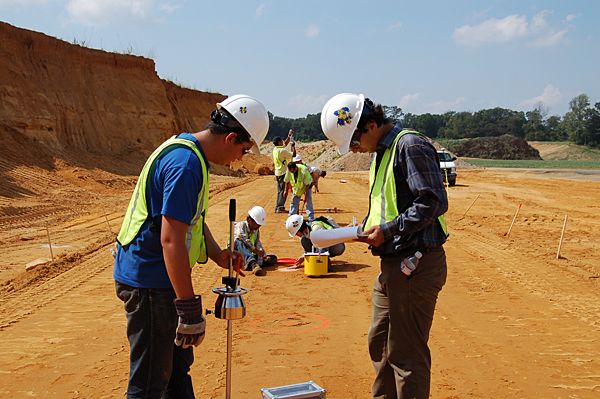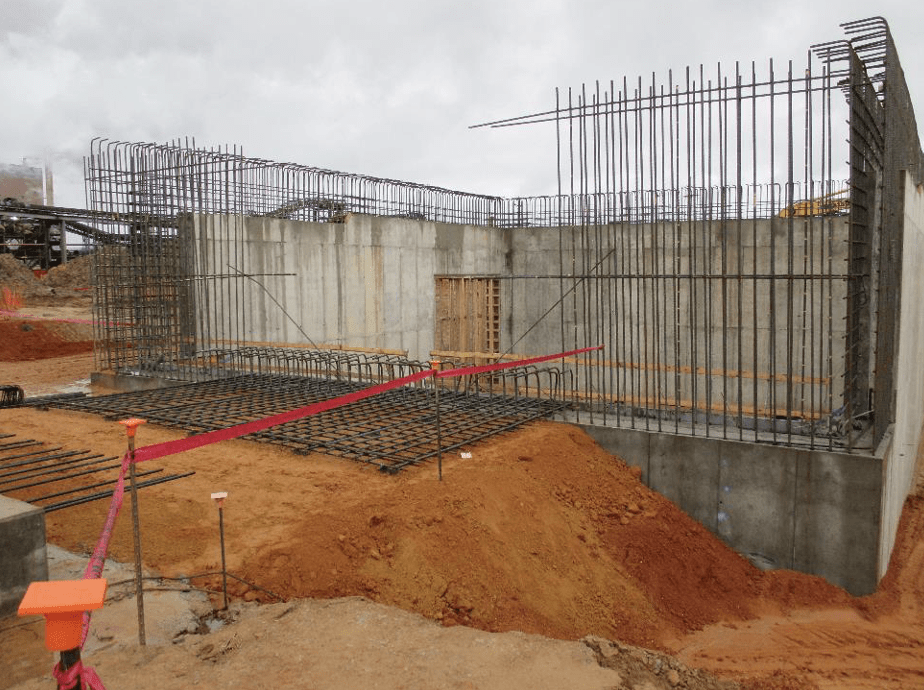Specialized Geotechnical Works for Sustainable Building Solutions
Wiki Article
Exactly How Consulting Engineers Enhance Geotechnical Design Projects: Insights Into Their Knowledge, Approaches, and Collaborative Approaches
Consulting designers are pivotal in boosting geotechnical design jobs, applying their specialized expertise to browse the intricacies of subsurface problems. Their collaborative strategies foster interaction amongst diverse job stakeholders, eventually shaping the job's trajectory.Role of Consulting Engineers
The competence of speaking with engineers in geotechnical engineering is essential to the successful execution of building and construction jobs. These specialists play a crucial function in analyzing soil and rock buildings, which are critical aspects affecting style and construction decisions. By carrying out extensive site examinations, getting in touch with engineers gather crucial data that notifies the layout process, making certain jobs are developed on stable and appropriate ground.Consulting designers also supply very useful insights right into danger monitoring (geotechnical geologist). They determine prospective geotechnical dangers, such as landslides, soil liquefaction, and negotiation issues, allowing stakeholders to implement reliable reduction techniques. Their experience help in maximizing structure designs, which can bring about considerable price financial savings and improved safety and security
Moreover, speaking with designers work as a vital web link between job proprietors, designers, and specialists. Their capacity to equate complicated geotechnical data right into workable recommendations fosters partnership and promotes notified decision-making throughout the task lifecycle. This multidisciplinary method not only boosts task performance yet likewise guarantees compliance with governing requirements and finest techniques.
Secret Methods in Geotechnical Design

One primary method is site examination, which involves conducting area examinations and research laboratory analyses to collect information on subsurface conditions. Techniques such as Requirement Infiltration Screening (SPT) and Cone Penetration Screening (CPT) are widely made use of to evaluate soil stratigraphy and stamina. Additionally, geophysical techniques, including seismic and electrical resistivity studies, provide non-invasive ways to examine subsurface features.
An additional vital technique is numerical modeling, which makes it possible for designers to simulate various scenarios and predict just how soil-structure communications will act under different loading problems. Limited Element Analysis (FEA) is a typical approach utilized in this context.
Furthermore, the style of foundations, preserving structures, and earthworks depends heavily on these methodologies - geotechnical geologist. By incorporating innovative analytical tools with field information, getting in touch with designers can create tailored remedies that address particular project challenges, inevitably adding to the stability and safety of building and construction jobs
Value of Soil Analysis
Dirt analysis functions as a fundamental element in geotechnical engineering, offering essential insights right into the physical and chemical buildings of soil required for reliable construction preparation. Understanding soil attributes is important for identifying its load-bearing capacity, drainage actions, and possibility for settlement or instability. Comprehensive dirt investigations, including tasting and lab screening, assistance determine specifications such as dirt kind, dampness content, thickness, and shear strength.
These analyses notify the selection of appropriate building techniques and materials, inevitably affecting job security and durability. For example, cohesive soils might require different foundation designs compared to granular dirts, requiring tailored design services. Dirt evaluation aids in determining contaminants that could present dangers to human health or the atmosphere, allowing for the growth of mitigation approaches.
Including dirt evaluation into the early phases of job development aids to minimize unanticipated difficulties, making certain that engineers can expect and deal with potential concerns prior to they escalate. By establishing a detailed understanding of the website conditions, consulting designers can optimize style effectiveness and lower expenses, thus boosting the general success of geotechnical design tasks.
Joint Strategies in Projects
Effective geotechnical tasks consulting civil engineering companies frequently depend upon collective methods that bring together varied proficiency from numerous self-controls. Efficient partnership among speaking with designers, rock hounds, ecological researchers, and construction professionals is essential for dealing with intricate difficulties and enhancing task outcomes. By leveraging the one-of-a-kind skills and understanding of each team participant, projects can gain from an alternative understanding of the website problems, regulatory demands, and design restraints.Regular interaction and interdisciplinary conferences help with the sharing of insights and promote a society of synergy. These collaborative efforts allow the recognition of prospective threats early in the task lifecycle, permitting timely mitigation methods. Including responses from stakeholders, consisting of neighborhood areas and governing agencies, ensures that all perspectives are considered, enhancing project acceptance and compliance.
Additionally, the integration of advanced technologies, such as Geographic Information Equipment (GIS) and Structure Information Modeling (BIM), further improves cooperation. These tools allow for the real-time sharing of data and visualization of geotechnical conditions, promoting notified decision-making. Ultimately, a collaborative approach not only streamlines job execution but also lays the structure for cutting-edge options to complicated geotechnical engineering challenges.
Effect On Task End Results

Consulting engineers utilize advanced methods such as threat evaluation and anticipating modeling, which boost the precision of job projections. Their ability to integrate cutting-edge technologies, like geotechnical instrumentation and data analytics, additionally refines the design and building processes. Consequently, tasks experience improved effectiveness, minimized prices, and minimized delays.
Additionally, cultivating effective communication and collaboration amongst staff member enhances analytical abilities. When difficulties arise, an unified front permits for speedy recognition of remedies, preventing potential problems. Eventually, the collective efforts of seeking advice from designers add to greater high quality results, making sure that tasks fulfill both governing standards and client expectations.
Verdict

Report this wiki page